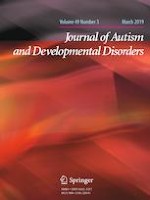30-10-2018 | Original Paper
Designing a Serious Game for Youth with ASD: Perspectives from End-Users and Professionals
Gepubliceerd in: Journal of Autism and Developmental Disorders | Uitgave 3/2019
Log in om toegang te krijgenAbstract
Recent years have seen an emergence of social emotional computer games for individuals with Autism Spectrum Disorder (ASD). These games are heterogeneous in design with few underpinned by theoretically informed approaches to computer-based interventions. Guided by the serious game framework outlined by Whyte et al. (Journal of Autism and Developmental Disorders 45(12):1–12, 2014), this study aimed to identify the key motivating and learning features for serious games targeting emotion recognition skills from the perspectives of 11 youth with ASD and 11 experienced professionals. Results demonstrated that youth emphasised the motivating aspects of game design, while the professionals stressed embedding elements facilitating the generalisation of acquired skills. Both complementary and differing views provide suggestions for the application of serious game principles in a potential serious game.
